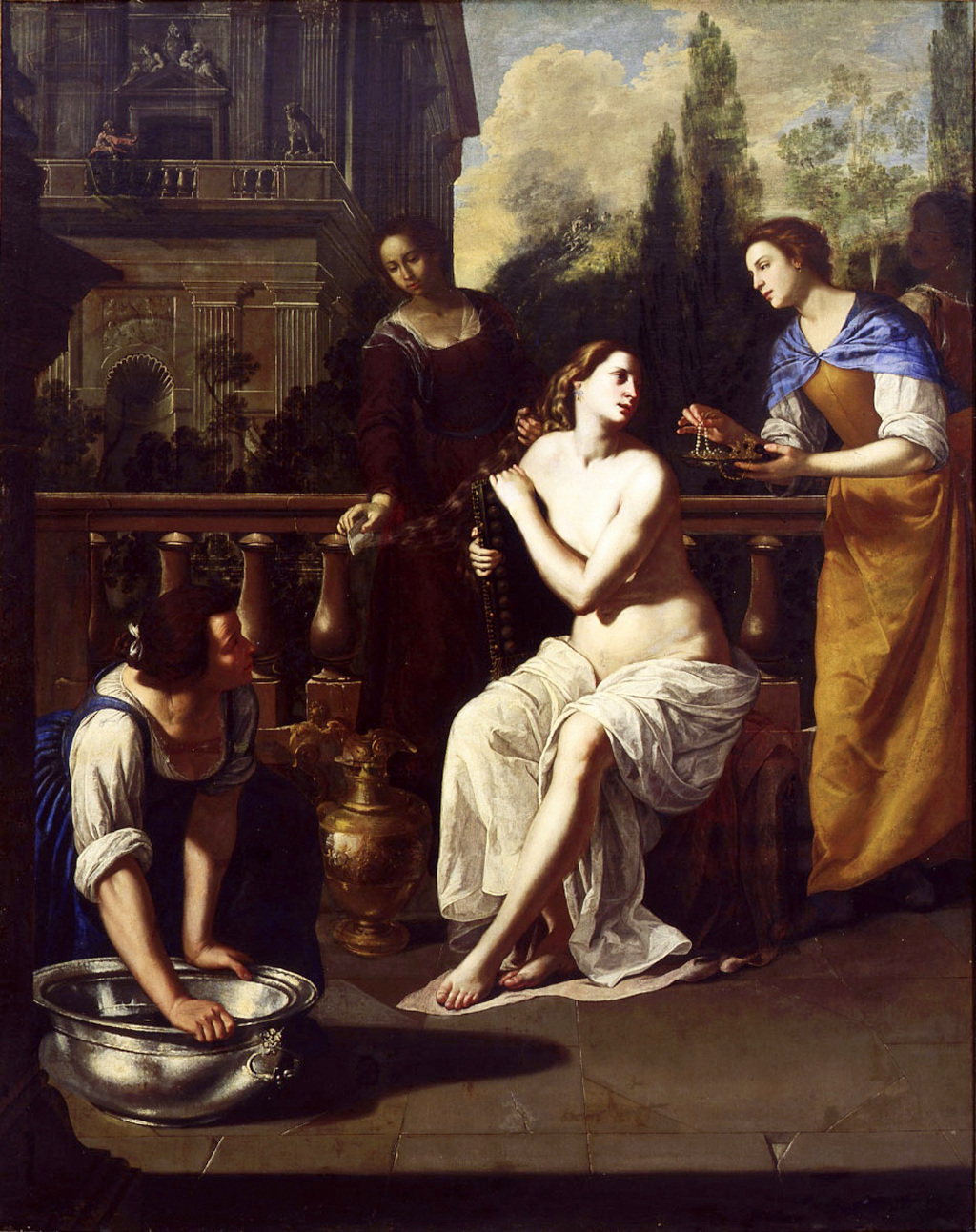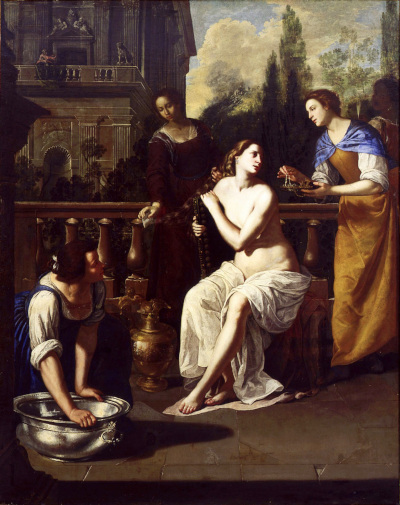Bathsheba, sometimes known as Bathsheba with King David dates to around 1636–1637. The painting was completed by Artemisia Gentileschi, and was one of a number of depictions of this scene from her career.
This complex piece was created in a collaborative fashion, with Artemisia working alongside Viviano Codazzi and Domenico Gargiulo. They were each requested to complete different sections of the painting, depending on the balance of their painting skills. Artemisia, naturally, was requested to focus on the female portraits, as this was an area that she had mastered particularly well.
The elements passed over to the other artists were the architectural features in the background, as well as the landscape with sky which appeared on the right hand side. The large canvas, which was over two metres in width and height, would have made it easier for each artist to add their own work individually, though there must have been a later point at which someone came in to ensure that the holistic appearance of the piece worked effectively.
The Story of Bathsheba
King David looks over from his balcony in the top left of the painting. He eventually lures the married Bathsheba into his bed, resulting in her pregnancy. Her husband later dies in battle, allowing the two to marry. Artemisia tackled this story many times, and in the example in front of us here, she lays the blame firmly on the King, by focusing on the innocence of the female figure in the foreground.
Bathsheba is being attended to by her maids and her modesty is protected by the artist using a carefully angled arm as well as a cloth across her lower half. She looks in the opposite direction, away from the King, as if to suggest that she was the moral figure in this story, but became corrupted by the advances of King David.
Description
Viviano Codazzi supported the piece with his work on the architecture in the background, a genre in which Artemisia did not have much experience. Domenico Gargiulo then carried over to the right hand side with a series of tall trees in front of a cloudy sky. If one removes these elements from our mind, then the foreground feels entirely typical of a Gentileschi work.
Three maids attend to the bathing young woman, who appears entirely unaware of the interests of the King. Similar can be found in Bathsheba at her Bath, which came around the same time in the artist's career. Seven individual work on this theme, in total, have been attributed to Artemisia, and she is well known for re-visiting her favoured themes across her career. Female characters were also particularly common within her oeuvre.
Some of the elements to look our for within this work includes the stunning detail along the sculptured wall which sits just behind the foreground figures, as well as the continuation of the artist's impressive mastery of drapery, which can be seen on Bathsheba's white cloth, as well as the clothing to the tall figure on the right hand side, combining mustard and blue. It is also worth comparing the work with other interpretations from that period, where male artists might push in other directions, even with the same content.
Location
This piece can be found at the Columbus Museum of Art, Ohio, making it one of the few paintings by Artemisia Gentileschi to reside today within a public collection with the US. The rise in interest in female artists has helped bring a greater exposure to the work of Artemisia, as well as increased valuations of her work. Many consider her to have been the most significant female Baroque artist.
Large Image of Bathsheba
This impressive piece, one of her largest creations, is included with a larger image below. Great detail was added within this collaborative piece, where specialists displayed their individual skills in different sections of the painting.
 Bathsheba
Bathsheba




